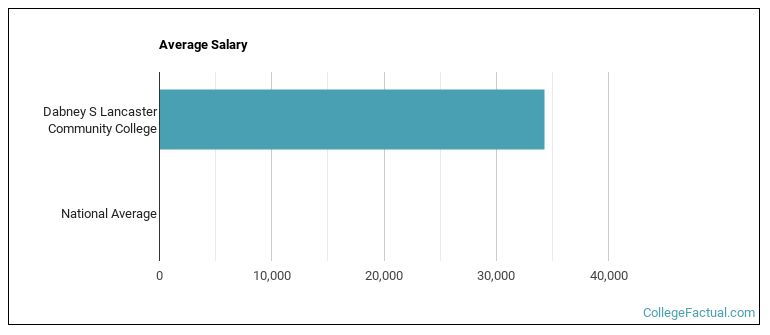 by our College Data Analytics Team
by our College Data Analytics TeamExplore the best ranked schools for the programs you are most interested in.
DSLCC was not ranked in College Factual's Best Overall Colleges report this year. This may be because not enough data was available.
See all of the rankings for Dabney S Lancaster Community College.
As long as you meet basic requirements, you should not have any trouble getting into Dabney S Lancaster Community College since the school has an open admissions policy. Still, be sure to submit any requested materials and that your application is completed in full.
The student to faculty ratio at Dabney S Lancaster Community College is about average at 16 to 1. This ratio is often used to gauge how many students might be in an average class and how much time professors will have to spend with their students on an individual level. The national average for this metric is 15 to 1.
When estimating how much access students will have to their teachers, some people like to look at what percentage of faculty members are full time. This is because part-time teachers may not have as much time to spend on campus as their full-time counterparts.
The full-time faculty percentage at Dabney S Lancaster Community College is 26%. This is lower than the national average of 47%.
The freshmen retention rate is a sign of how many full-time students like a college or university well enough to come back for their sophomore year. At Dabney S Lancaster Community College this rate is 59%, which is a bit lower than the national average of 68%.
During the 2017-2018 academic year, there were 1,075 undergraduates at DSLCC with 363 being full-time and 712 being part-time.
| $0-30 K | $30K-48K | $48-75 | $75-110K | $110K + |
|---|---|---|---|---|
| $4,288 | $5,965 | $8,101 | $10,987 | $10,016 |
The net price is calculated by adding tuition, room, board and other costs and subtracting financial aid.Note that the net price is typically less than the published for a school. For more information on the sticker price of DSLCC, see our tuition and fees and room and board pages.
While almost two-thirds of students nationwide take out loans to pay for college, the percentage may be quite different for the school you plan on attending. At DSLCC, approximately 10% of students took out student loans averaging $3,983 a year. That adds up to $15,932 over four years for those students.
Get more details about paying for Dabney S Lancaster Community College.

See which majors at Dabney S Lancaster Community College make the most money.
Get more details about the location of Dabney S Lancaster Community College.

Contact details for DSLCC are given below.
| Contact Details | |
|---|---|
| Address: | 1000 College Drive, Clifton Forge, VA 24422-1000 |
| Phone: | 540-863-2800 |
| Website: | www.mgcc.edu/ |
| Most Popular Majors | Bachelor’s Degrees | Average Salary of Graduates |
|---|---|---|
| Liberal Arts General Studies | 159 | NA |
| Nursing | 50 | NA |
| Electronics Maintenance & Repair | 26 | NA |
| Electrical & Power Transmission Installers | 24 | NA |
| Allied Health Professions | 17 | NA |
| Natural Resources Conservation | 16 | NA |
| Human Development & Family Studies | 7 | NA |
| Practical Nursing & Nursing Assistants | 7 | NA |
| Culinary Arts | 6 | NA |
| Precision Metal Working | 6 | NA |
Online courses area a great option for busy, working students as well as for those who have scheduling conflicts and want to study on their own time. As time goes by, expect to see more and more online learning options become available.
In 2022-2023, 432 students took at least one online class at Dabney S Lancaster Community College. This is a decrease from the 458 students who took online classes the previous year.
| Year | Took at Least One Online Class | Took All Classes Online |
|---|---|---|
| 2022-2023 | 432 | 104 |
| 2021-2022 | 458 | 140 |
| 2020-2021 | 652 | 234 |
| 2018-2019 | 404 | 97 |
Learn more about online learning at Dabney S Lancaster Community College.
Footnotes
*The racial-ethnic minorities count is calculated by taking the total number of students and subtracting white students, international students, and students whose race/ethnicity was unknown. This number is then divided by the total number of students at the school to obtain the racial-ethnic minorities percentage.
References
More about our data sources and methodologies.